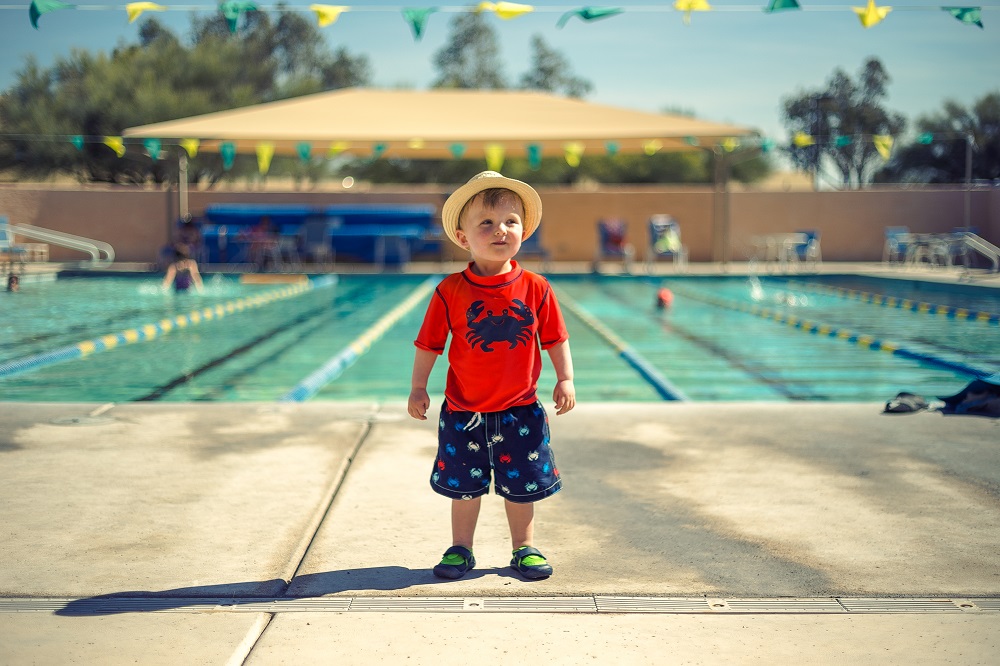The natural buoyancy of water makes the body feel like it is one with the water, which is probably something kids love. Still, the possibility of a child drowning is real and should not be taken lightly.
The following are just a few ways that you can keep your children safe in different situations.
Staying Safe at the Public Pool

Going to the local pool during the summer is a favorite pastime for many children. Not only do they get to swim around, but they get to play with other kids too. Because of how many people tend to frequent public pools, there are a few precautions you should take.
For one, make sure that there is an active lifeguard on-site at all times who is certified. It is also important to check the pool’s drain covers. These needs to be free of cracks or defects to ensure that a child’s foot or hair does not get sucked in by the powerful suction power. If your child doesn’t know how to swim, it’s important that you always stay nearby and that your child stays in the shallow areas where his or her feet can still touch the bottom.
Bathtub Preparedness
You may not realize it, but the bathtub is definitely a dangerous area of the home. This is because kids are not always supervised when they are bathing, especially as they get to be two or three-years-old where they are more independent.
Children of this age are prone to slip and fall as they play around in the tub. To help you prevent this, it would probably be a good idea to install non-slip strips on the bathtub floor.
Kids and the Family Hot Tub
The family hot tub is definitely a favorite amenity of children’s. Like all areas that have water, though, they are still some precautions that need to be taken when around them. The danger that hot tubs pose can be addressed by simply talking about it. You could tell your children that hot tubs are not meant for underwater swimming. You can also make sure that they know that the hot tub is a place where the whole family goes and that no one should ever be alone in there. It should also be pointed out that children are sensitive to heat. This means that kids should not get into the hot tub if its temperature is higher than 95 degrees.
Ocean Blue, Safety Rules
One of the scariest things about swimming at the beach is riptides. This is a little technical, but it starts with the water moving toward the shore. You’ll see waves, which means that the water is relatively shallow. Now, there is a reaction to this movement where the water forms a current pushing in the opposite direction. The water forms what is called a riptide where the water seems calm, but there is a strong current underneath.
This current can trap your child, pushing him or her away from the shore. Teach your child to stay away from still waters and to swim parallel to the shore to get out of a riptide if your child becomes trapped in one.
In short, parents can never be too safe when it comes to their children and bodies of water. There is nothing wrong with summer fun, but it should be as safe as possible just in case.
